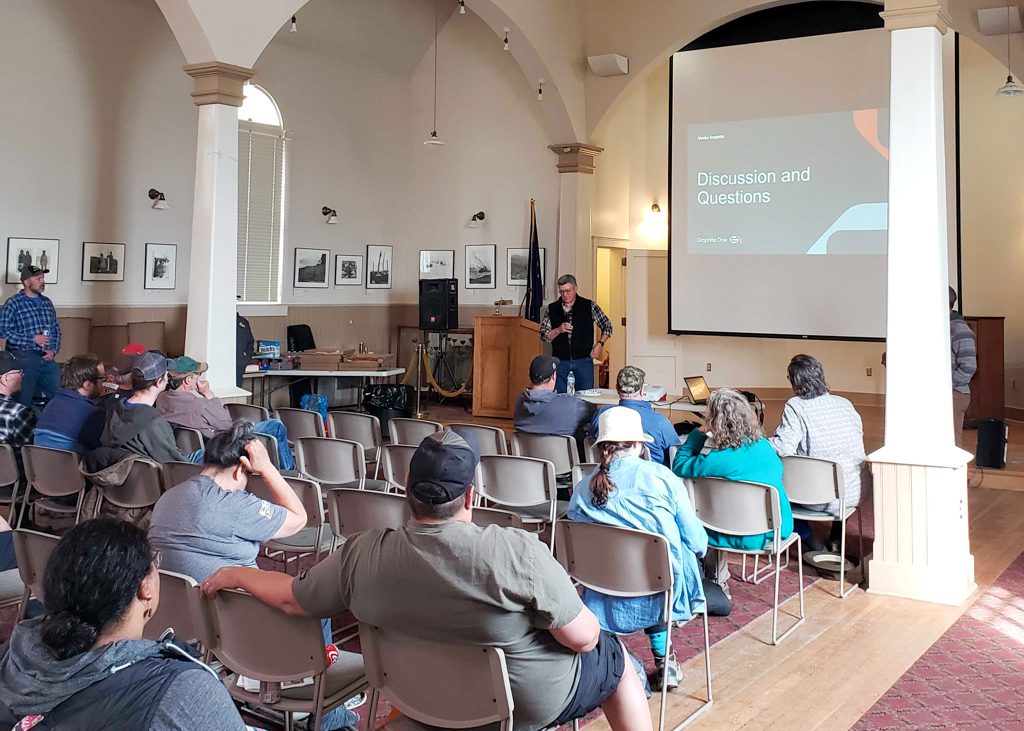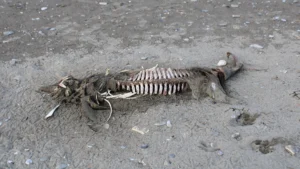Graphite One has resumed preparation for the eventual establishment of a graphite mine in the Kigluaik Mountains north of Nome. The company will be wrapping up work on the pre-feasibility study in June before moving onto work for the feasibility study later in the season.
Graphite One has also reinstated its annual community meetings, which it didn’t hold in 2020 or 2021 due to concerns about the spread of COVID-19. Representatives from the company held meetings in Nome, Teller and Brevig Mission from May 31-June 2.
Graphite One’s overall goal is to secure a domestic source of graphite that can be used in American industry. While the U.S. Geological Survey has long considered graphite a critical mineral, President Joe Biden recently invoked the Defense Production Act to support the production of graphite and other minerals used in the construction of large-capacity batteries.
Graphite One Project Manager Loren Prosser explained some of what Graphite One will be doing in the Kigluaik Mountains this summer.
“We established a 24-person seasonal camp last year. … And that program is going to expand this year with additional drilling, exploration and also environmental research and baseline collection work. And so that camp will grow in size as well,” Prosser said.
Graphite One will also have researchers based in Nome, Prosser said, but they’ll be constructing a camp at Satellite Field so as to not put pressure on Nome’s housing market.
The project is still in its exploratory phase, with the pre-feasibility study set to conclude within the month. The pre-feasibility study looks at the amount and location of graphite in the area, to determine the economic viability of the mine as well as inform its design, according to Graphite One Chief of Operations Stanley Foo.
“All the work we’re doing is really geared towards designing a project that will be obviously profitable, but also environmentally safe, and just fit in well with the surrounding terrain and environment. And we want to make sure we’re aware of all the subsistence resources in the area so we know how to design a project that protects them,” Foo said.
After that comes the feasibility study, which looks at the same information, but goes into more detail.
“By the time you get through the feasibility stage, you have a good deal of confidence that you have a project you can take forward, and (that) the local area (will) be accepting of that project and have full confidence in it,” Foo said.
The feasibility study will conclude sometime in 2024, Foo estimated. Assuming all goes according to plan, the project will then move into a permitting phase, which will take another year at minimum, he said.
In the meantime, Graphite One will continue to meet annually with communities in the region and with the subsistence advisory council. On June 8, the company is scheduled to temporarily block access to mile 27-28 of the Teller Road while they bring in a Chinook Helicopter for operations at their base camp.
Graphite One would also be open to additional meetings if local tribal councils have additional questions or would like more detailed or frequent updates on the project, Foo said. To reach out to Graphite One, contact Uqaqti Consulting at graphiteone@uqaqti.com.
Image at top: Graphite One community meeting at Old St. Joe’s in Nome. Photo by Davis Hovey, KNOM (2022).





